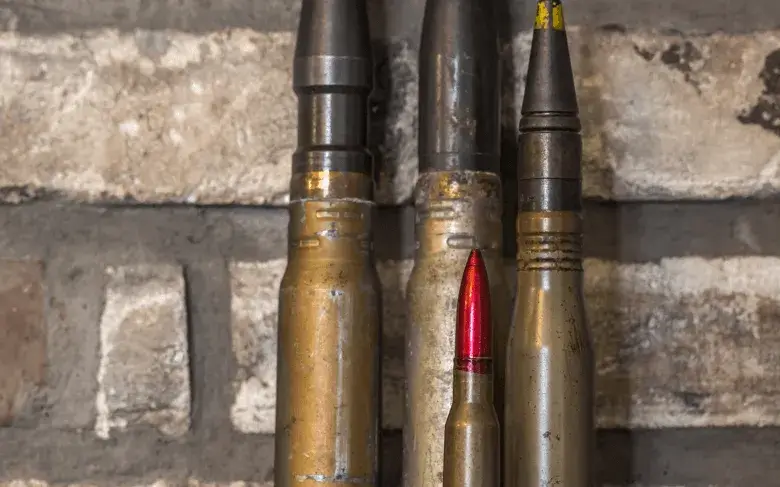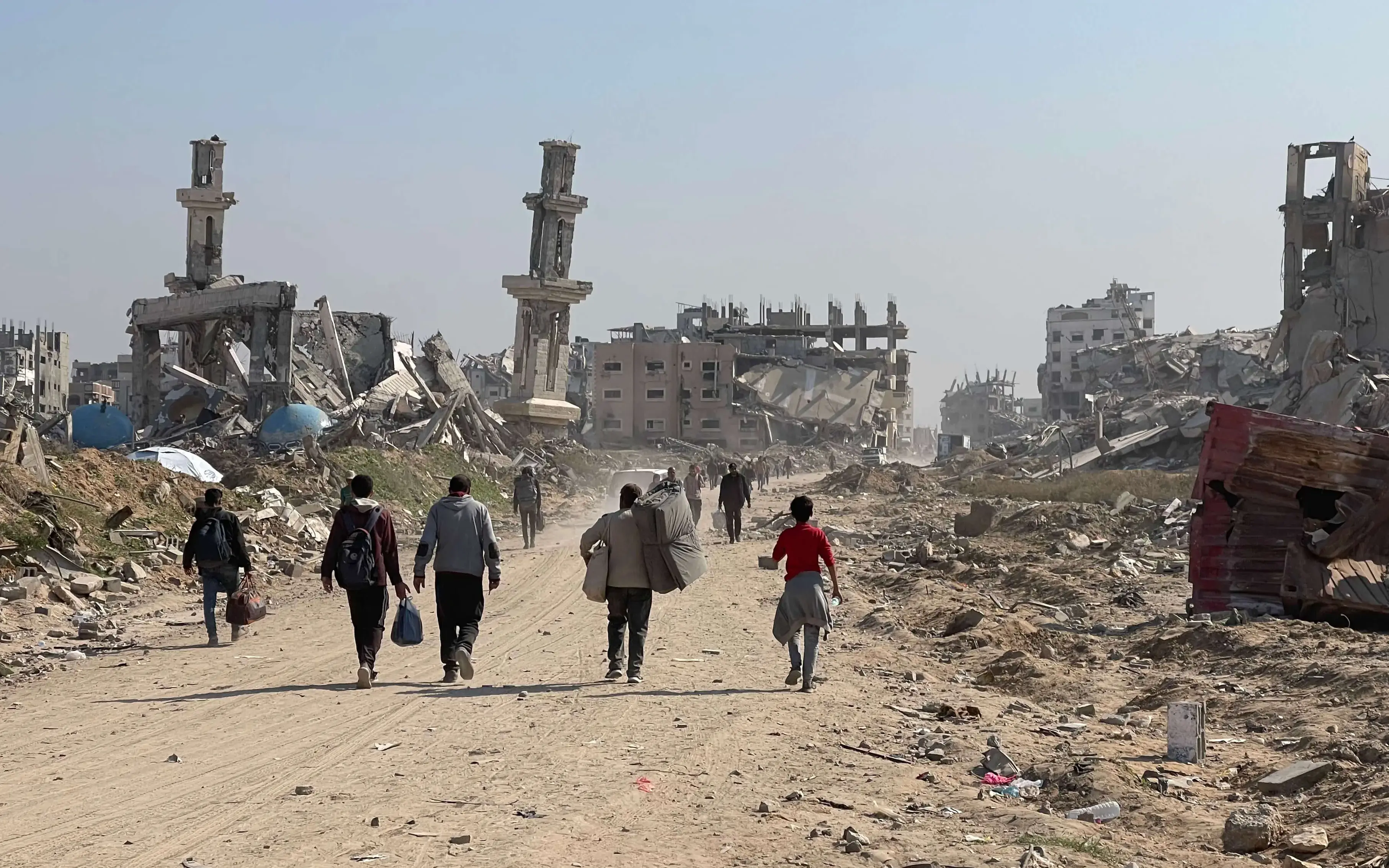The study on conflicts, human rights and peacebuilding published annually by the Escola de Cultura de Pau (ECP) of the Universitat Autònoma de Barcelona (UAB) identifies four major risk contexts that could deteriorate in the future.
The ‘Alerta! 2025!’ Report, prepared by the Escola de Cultura de Pau (ECP) of the Universitat Autònoma de Barcelona (UAB), offers a global snapshot of conflictivity and peacebuilding in the world, based on the analysis of armed conflicts, sociopolitical tensions and the relationship between gender, peace and security.
This year’s edition —the ECP publishes this annual study— collects the main dynamics of 2024, identifying causes, actors and consequences of violent scenarios, but also opportunities to reduce, prevent or resolve conflicts. The report’s aim is to make this information available to political decision-makers, peace actors and the media, with the intention of preventing new crises and giving visibility to situations of violence that often remain outside the media spotlight.
According to ‘Alerta 2025!’, during 2024 thirty-seven armed conflicts were registered, the highest figure in the last twelve years, with a notable concentration in Africa —seventeen— and an increase in intensity in more than half of these armed contexts.
The data point to a sustained growth in forced displacement —more than 122 million people in the first half of the year— as well as increases in lethality, sexual violence and impact on vulnerable groups, especially in countries with greater gender inequalities or discriminatory legislation against LGBTIQ+ people. Likewise, 116 tension scenarios were recorded, with a tendency to escalation in a significant number of cases and a growing weight of international disputes.
The report also points to five opportunities for peace in contexts such as the Democratic Republic of Congo–Rwanda, Bangladesh or Syria, but warns of four particularly worrying risk scenarios: Sudan; the India–Pakistan axis; the relationship between China and Taiwan; and the militaristic escalation in Europe. Below, we develop these focal points of tension and possible deterioration of international security on which the ECP report focuses attention.
- Sudan: a civil war pushing the country to collapsed
Since 13 April 2023, Sudan has been immersed in a civil war between the Army (SAF) and the Rapid Support Forces (RSF). The violence, fragmented and spread across the country, has left the RSF, led by Mohamed Hamdan Dagalo —known as Hemedti— in key regions such as Darfur and Kordofan, while the Army has recovered points such as Khartoum, which feeds the risk of a de facto partition with two parallel powers. On 4 March 2025 the RSF proclaimed a so-called “Government of Peace and Unity” —with Hemedti—, widely rejected. International mediations, such as those in Jeddah, Bahrain, Geneva and Switzerland, have borne no fruit.
The figures of the humanitarian crisis ravaging the country are shocking: about 30 million people need assistance, 26 million suffer food insecurity, 14 areas are at imminent risk of famine, one in three hospitals has ceased to operate and more than 4.9 million children and pregnant women suffer malnutrition. Equally, there are more than 12 million internally displaced people and more than 4 million refugees. The International Organization for Migration (IOM) has covered only 21% of the required funds.
With indirect support from regional actors such as Iran and the United Arab Emirates, the ambiguous intervention of powers like China and Russia, the most likely outcome for 2025, according to the ECP report, is the prolongation of the conflict, a worsening humanitarian situation and the risk of state collapse or partition. Thus, a negotiated solution to the conflict only seems viable if the current conditions changed radically.
- Tension between China and Taiwan: a permanent risk scenario
2024 and the first part of 2025 have been marked by a sustained increase in political and military tension between China and Taiwan, and between China and the US over the Taiwan issue. William Lai Ching-te’s victory in January 2024 accelerated Beijing’s pressure, which has increased its military activity around the island since 2020, especially after Nancy Pelosi’s visit in 2022. Meanwhile, Taipei has reinforced its defence and its ties with Washington. In practice, the more assertive rhetoric of the new US administration has fuelled the perception of a possible shift from strategic ambiguity.
The escalation translated into measurable facts: Taiwan recorded more than 3,000 incursions of Chinese aircraft in 2024, an 80% increase on the previous year. According to the US Indo-Pacific Command, China’s aggressive activity rose by 300%. Beijing carried out massive exercises, simulating blockades and the neutralisation of infrastructures.
Beyond shows of military force, there have been so-called grey-zone actions —cutting submarine cables, cyberattacks and disinformation. Taipei has responded with internal measures, notably extending compulsory military service to one year, conducting large drills and creating resilience committees, and by labelling China a “hostile foreign force”.
Although voices warn that China could be preparing for action, several analysts still consider an immediate invasion unlikely due to the absence of a social majority in favour of independence in Taiwan and given the regional consequences. Nonetheless, the combination of military intimidation, political pressure and greater US involvement has raised the risk of incidents and a sustained militarisation of the Strait. This scenario would have important implications for regional security.
- India and Pakistan: a latent large-scale armed conflict
22 April 2025 was a key date in the escalation between India and Pakistan. An attack in Pahalgam carried out by The Resistance Front —an offshoot of Lashkar-e-Taiba— killed 26 people, mostly Hindu tourists, and brought the two countries back to the brink of large-scale conflict. India’s response mixed diplomatic measures —suspending the Indus Waters Treaty, expelling defence attachés, closing the Wagah crossing and imposing trade blockades— with air strikes against alleged terrorist infrastructure. The Pakistani government considered these strikes acts of war and reported 31 civilian casualties.
The situation escalated rapidly into reciprocal air strikes over sensitive areas, the use of drones by both sides and offensive operations such as India’s Operation Sindoor and Pakistan’s Operation Buryan ul Marsoos. Casualty figures differ by official source: India reported 21 civilians and 5 military deaths; Pakistan claimed 40 civilians and 11 military deaths.
The risk that Pakistan’s nuclear arsenal could be drawn into the dynamic prompted a stronger international diplomatic reaction. Ultimately, on 10 May a ceasefire was announced, facilitated by US diplomatic efforts after interventions by actors such as Saudi Arabia, Iran and Turkey.
Despite the cessation of hostilities, the crisis crossed red lines: India’s militarised response, the use of drones and the possible involvement of Chinese arms on Pakistan’s side have multiplied regional complexity. Communication channels remain open, but there has been no substantive progress towards broader dialogue. For now, the international community has avoided an open confrontation, but the episode leaves far more volatile relations and an urgent need to strengthen diplomacy to prevent new escalations.
- The militaristic turn of the European Union (EU): a massive rearmament plan
The EU and its Member States have launched a massive rearmament plan, endorsed by the European Council in March 2025. This shift accelerated the militarisation of the continent in the early months of 2025. A glance at SIPRI figures shows military expenditure in Europe last year rose to $693 billion —83% more than in 2015— and NATO European countries’ arms imports have climbed 105% between 2015 and 2025.
A battery of measures has been set in motion to strengthen military capabilities —air and missile defence, long-range artillery, munitions, drones, military mobility, cyberwarfare and intelligence— with support to Ukraine at the core of this strategy.
The plan is accompanied by new instruments and funds mobilising public and private resources. At a global level the EU executive speaks of mobilising €800 billion in four years. The so-called safeguard clause is being explored so Member States can exceed the 3% deficit threshold and increase defence effort by about 1.5% of GDP annually for four years. Cohesion funds could be used for defence spending; financing rules have been relaxed and measures proposed to deregulate access so the military industry gains easier public and private finance.
Critical voices warn of the risks of this strategy: the plan diverts resources and leadership that could go to diplomacy, mediation, conflict prevention and social policies; it boosts European arms exports —including to countries with rights violations— and empowers the arms industry lobby.
From an environmental perspective, militarisation worsens the climate emergency: armies are large fossil fuel consumers and account for a significant share of emissions.
Finally, NATO pressure and calls to raise defence spending to 3–5% of GDP could consolidate a possible scenario of confrontation and escalation. Faced with this, the ECP report advocates political alternatives such as multilateralism, dialogue and de-escalation, and a mobilisation of civil society to demand broader, less militarised forms of security.







Add new comment